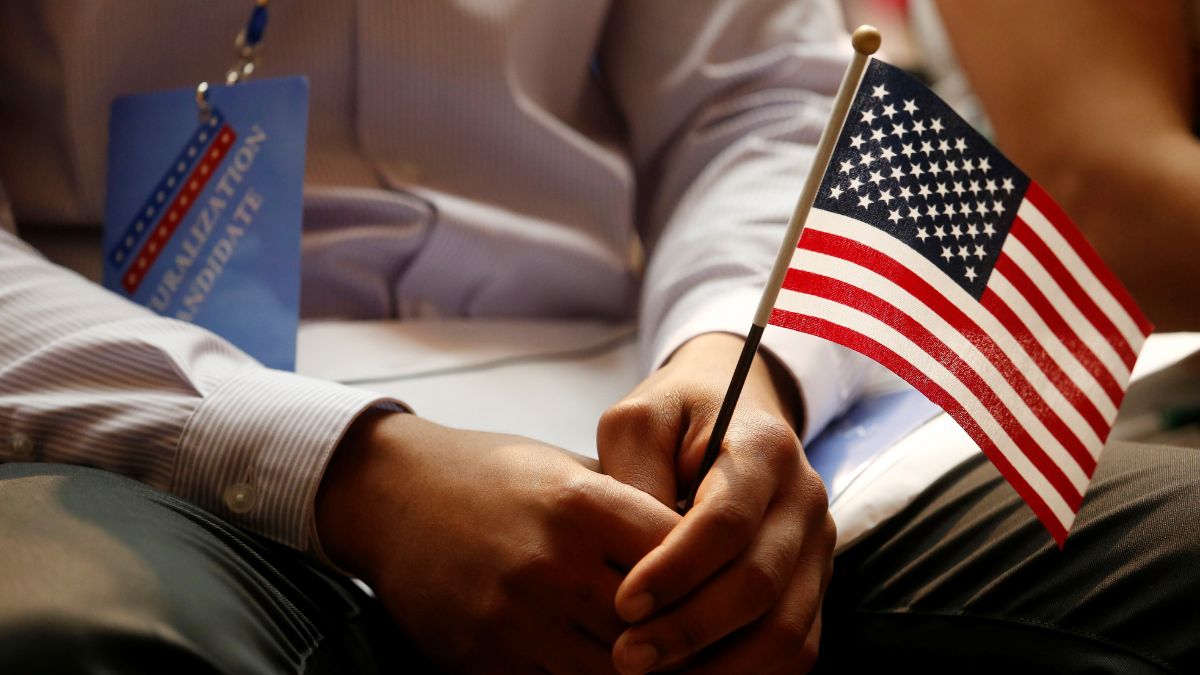The United States may be cracking down on immigration, but Indians aren’t ready to give up just yet.
Since the Trump administration is making it harder to get H1-B visas and other type of visas, Indians are now trying to admitted to the US via two new routes – the O-1 visas and ‘Einstein visas’.
But what do we know about these visas?
Let’s take a closer look:
O-1 visa
Like the H1-B visa, the O-1 is a non-immigrant visa.
However, this visa is earmarked for those who display ‘extraordinary abilities’ in science, technology engineering, mathematics, arts, education, business or athletics.
This visa was founded under the Immigration Act of 1990.
Unlike the H1-B visa, there is no cap to the O-1 visa.
The O-1 visa, which is initially granted for a three-year period, also has a 93 per cent approval rate.
It also can be extended indefinitely.
The H1-B visa, on the other hand, has an approval rate of just 37 per cent.
However, the O-1 visa application costs between $10,000 (Rs 8.55 lakh) and $30,000 (Rs 25.6 lakh) – which is 10 times more expensive than the H1-B visa.
In 2024, 22,669 visas were granted.
In 2023, 18,894 such visas were granted. This is over double the visas – 8,838 – granted in 2020.
Indians were allotted 1,418 such visas in 2023 – nearly triple the visas received, 487, in 2020.
Impact Shorts
More ShortsOnly citizens of the United Kingdom in Brazil received more such visas.
The visa does not require the applicant to have a minimum salary or a degree.
It can be processed in under two weeks.
All this explains why the O-1 visa, despite the exorbitant cost – is gaining popularity as an alternative to the H1-B visa.
US firms such as Tesla, Microsoft and McKinsey are using the O-1 visa to recruit Indian talent.
As are prestigious schools such as Yale and Harvard to bring in faculty.
However, there are still far more H1-B visas (225,957) allotted.
‘Einstein’ visa
This visa is officially called the EB-1 visa.
Despite it being nicknamed the ‘Einstein visa’, the famed scientist Albert Einstein was not responsible for the creation of the visa.
The visa is given to individuals with “extraordinary ability” who have received “sustained national and international acclaim”.
This includes Pulitzer Prize winners, Oscar winners, those who have won Olympic medals, academic researchers and professors of international repute.
Extraordinary ability can be demonstrated by showing that one has
Nationally or internationally recognised prizes
Evidence of membership in associations that demand outstanding achievement of their members
Articles about them in major media
Asked to be on a panel to judge others
Proof of original contribution to the field
Proof of success in arts
Proof of your articles in media
Proof that your work has been put on display at artistic exhibitions or showcases
Proof of a leading or critical role in distinguished organisations
Proof of high salary in your field.
This is among the most difficult visas to obtain.
Incidentally, First Lady Melania Trump came to America on an ‘Einstein visa’
At the time, back in 2001, she was Melania Knauss, a model from Slovenia working in New York.
She also happened to be dating Donald Trump.
Melania was one of just five people in Slovenia who was approved for the EB-1 visa.
Indians broker and agents are now promising to get these visas for researchers and professors – for a price.
Such advertisements have even been put up on LinkedIn, which is raising the hackles of many within the field of academics.
Experts are worried that such incidents could tarnish India’s hard won reputation in the field of science.
With inputs from agencies
)